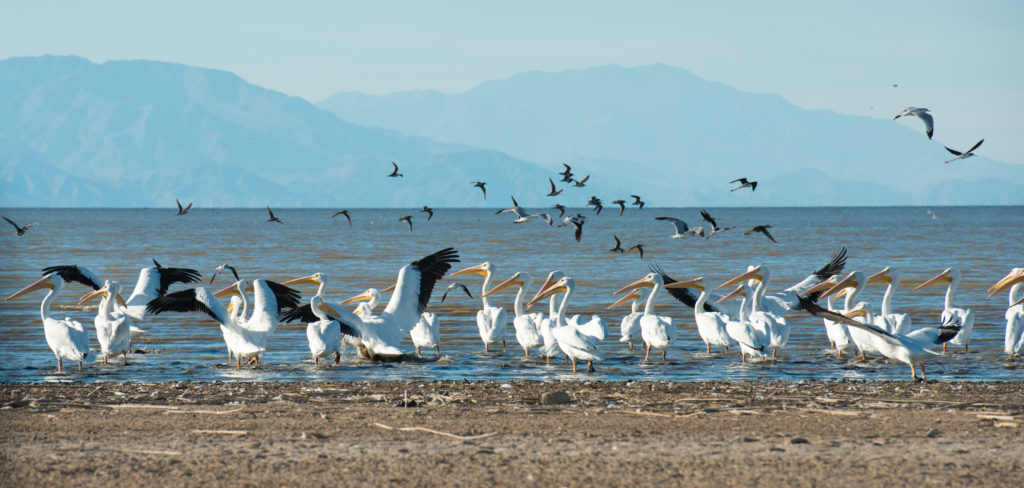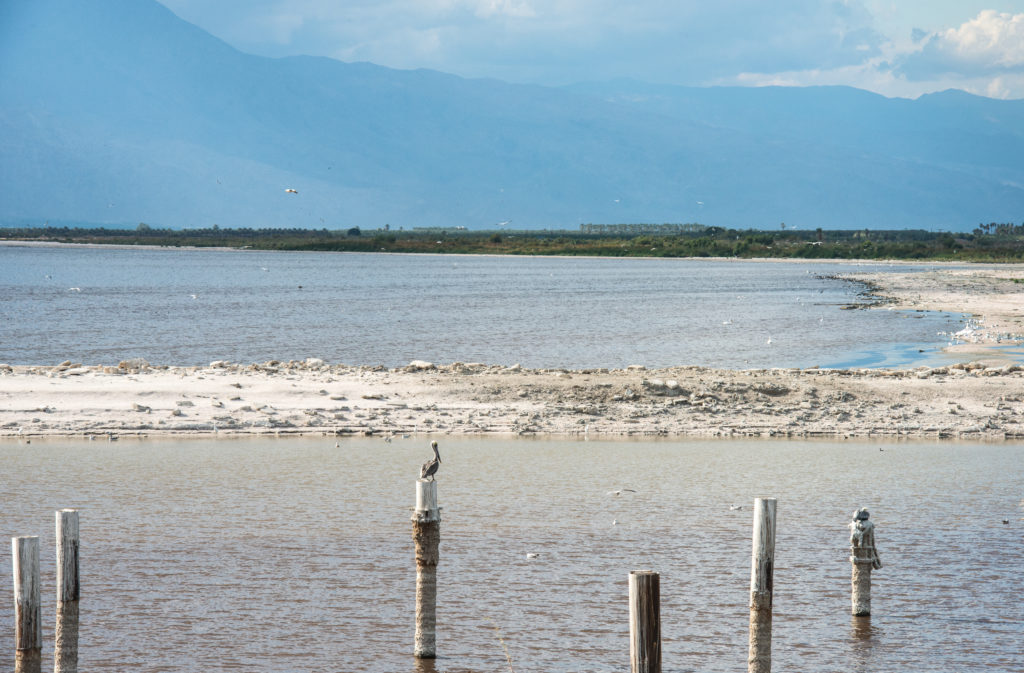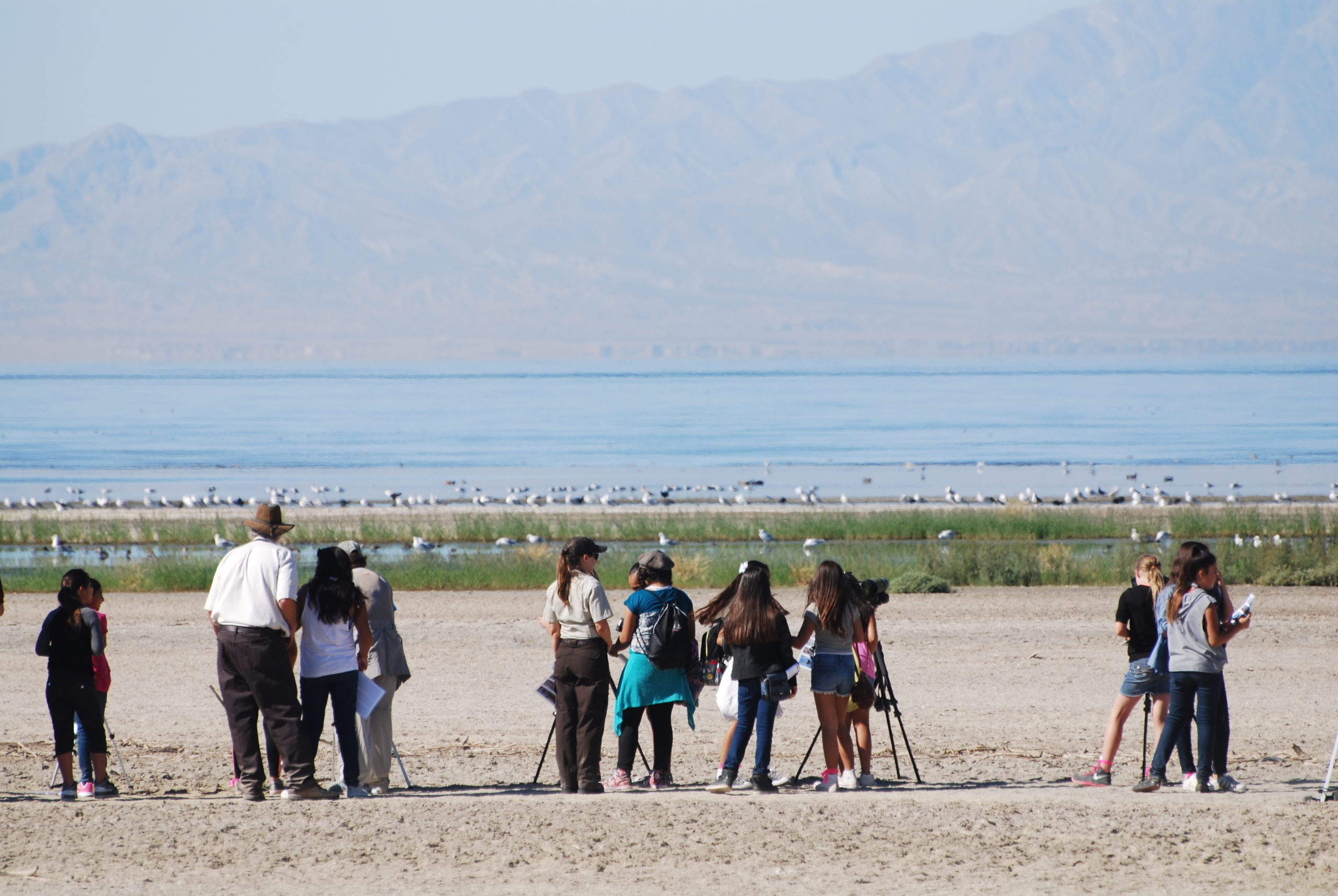Issue
The Salton Sea, California’s largest inland water body and one of six water bodies in the Salton Sea Transboundary Watershed, is a unique and vital natural resource. The Sea lies in the southeast corner of the state, in a region that has been home to Indigenous populations for over 10,000 years and now has about 650,000 residents. The current iteration of this prehistoric sea formed in 1905 when the Colorado River temporarily broke through a canal and water from the Colorado River flooded the basin. Since then, the Sea’s primary source of water has been runoff from nearby farms. Because more water evaporates from the Sea than flows into it, the lake has been gradually shrinking, destroying habitat for fish and birds, concentrating water pollution, and leaving behind a growing layer of toxic dust.
More than 30 tons of dust can blow off the dried lakebed on a given day and into surrounding communities. For too long, this public health emergency has gone unseen and unspoken by public officials. Families and children in Eastern Coachella Valley are regularly dealing with chronic respiratory issues, bloody noses, and asthma. In 2017, the University of Southern California’s Keck School of Medicine and Comité Civico Del Valle, an Imperial Valley environmental justice organization, documented the alarmingly high rates of asthma among young children in the region.
The Salton Sea’s worsening water quality and increasing salinity is also hurting wildlife. The millions of birds, such as pelicans, shorebirds, and waterfowl, that migrate each year along the Pacific Flyway have come to rely upon the Salton Sea as an important stop-over and breeding site and source of food and respite. Hundreds of species of birds spend time in and around the lake, but as habitat dries up, the Sea can no longer support fish and other food sources and many of those birds will be left with no other place to go.

Pelicans congregate at Red Hill Bay along the Salton Sea, California Department of Water Resources.
Strategy
For the past few decades, residents, community-based groups, and national environmental organizations have been sounding the alarm about the risks to the Salton Sea and the urgent need for concerted investment and management action by state agencies. Through organizing and advocacy, community leaders and environmental and health groups developed annual acreage milestones for new habitat and dust-suppression projects to measure state progress at the Salton Sea and secured more than $365 million in new state bond funding to begin to implement the plan.
Recognizing the importance of staying engaged and coordinated, in 2019 several organizations, including Alianza Coachella Valley, Audubon California, Comité Civico Del Valle, Defenders of Wildlife, Environmental Defense Fund, Leadership Counsel for Justice and Accountability, Pacific Institute, and Sierra Club formed the Salton Sea Partnership.
The Partnership developed a common agenda that centers on community-led solutions, public health, and ecological restoration.
To hold public officials accountable to this plan and future updates, the Partnership has grounded its organizing and policy work in its Vision 2025, in which the Salton Sea “serves as a gathering place for nearby residents and hundreds of species of birds and provides economic and recreational benefits for the communities who call this region home.”
What’s Next
The Partnership is on the front lines of ensuring California state agencies, with the assistance of federal agencies, fulfill their promises to Salton Sea communities through:
- active and meaningful community input;
- expediting project implementation;
- prioritizing public and environmental health;
- building habitat for birds to replace habitat lost as the Sea shrinks;
- providing for long-term operations, maintenance, monitoring, and management; and
- regularly reporting to oversight agencies and the public.
The COVID-19 pandemic has exacerbated the existing health concerns in the region. Local public health advocates Olivia Rodriguez and Ryan Sinclair explained in a Desert Sun op-ed that “years of delay and neglect have left our community exposed to the Salton Sea’s undescribed contaminants. We are rightfully worried about what happens next when one event – in this case a global pandemic – places us at a greater disadvantage. When so many do not have the privilege of staying home, and have to breathe already-compromised air, we need more answers and action to suppress the Salton Sea’s dust.”

The Salton Sea is located in both Riverside County and Imperial County, California Department of Water Resources.
Responding to calls from the Partnership and local governments, in June 2020, Governor Newsom signed a state budget that includes a $19.3 million investment to support implementation of the state’s plans along with implementation of the North Lake Pilot Project in Riverside County. The Governor’s budget also included $28 million to support the New River Improvement Project, which is vital to the community, environmental, and economic needs of the region. This was an important step forward on the longer road to protecting the Sea and surrounding communities.
As this work moves forward, the Salton Sea Partnership will continue to work with state and federal officials and policymakers to protect public and environmental health, engage communities, and expedite project implementation at the Salton Sea.
